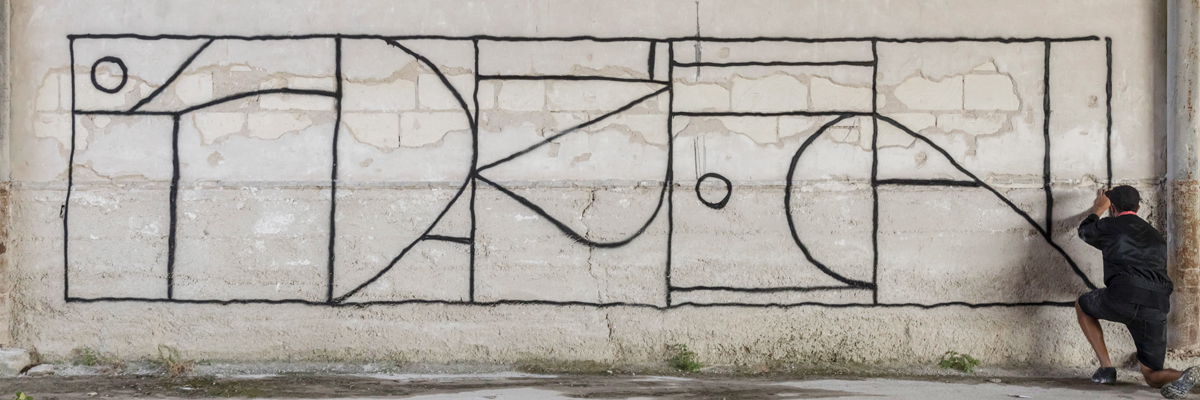Rome-based artist Greg Jager is “dismantling” the forms of architecture in much the same way that modern graffiti writers have been “deconstructing” the letter form in the last decade. The results have great similarities, but a careful eye will detect the original source possibly.
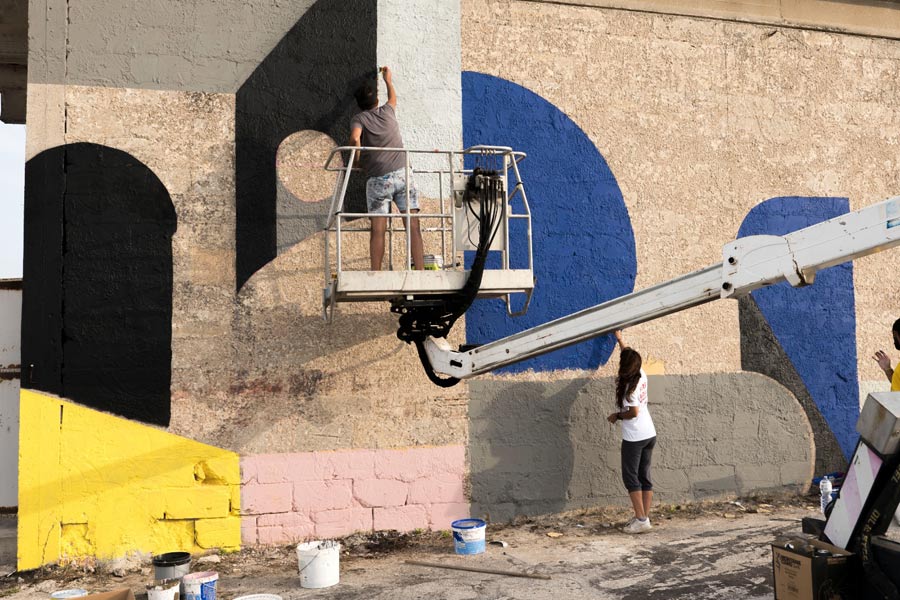
For comparison you may take a look at Sweden/Brooklyn artist, muralist and graff writer Rubin415, who evolved his 90s graffiti style into one that interprets the architecture and skylines of New York. Other current practitioners whom we’ve published in the last few years include ONCE from Barcelona, Stohead from southern Germany, Moscovite graffiti artist/muralist Konstantin Danilov, aka ZMOGK and the Eindhoven, Netherlands-based Erosie.
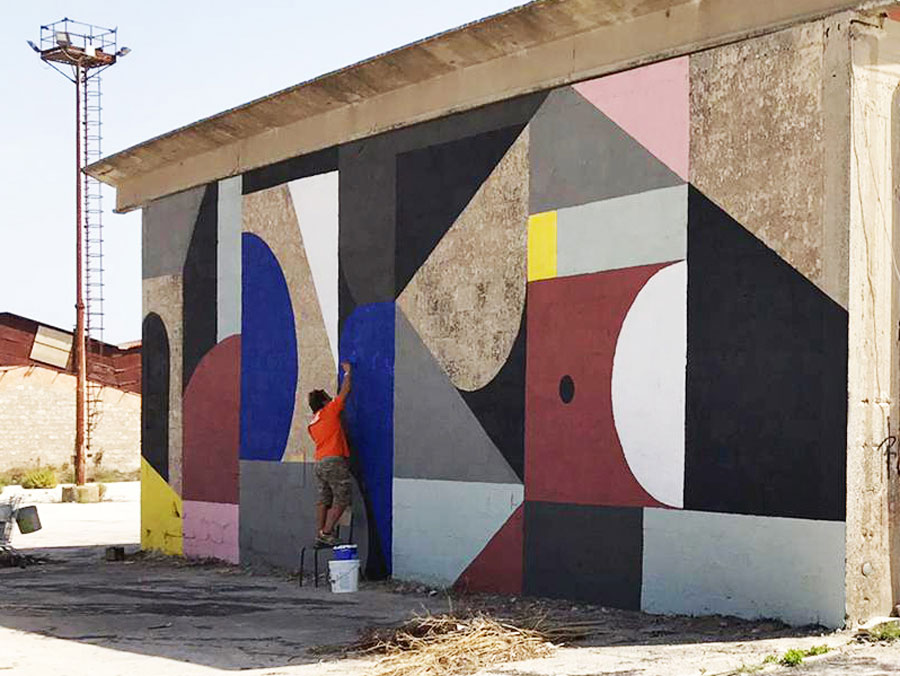
Here in Ragusa (Sicily) Greg Jager has selected a wall in the industrial ruins of the A. Ancione factory to reinterpret the shapes, colors, and juxtaposition of forms. Part of the Bitune public art festival that has crossed the city that with new public works in the last five years, Jager says that his new mural is his attempt at creating a “dialogue between architecture and anthropology” as this former asphalt industry is claimed by a developing artistic hub.
He calls his new work “Dismantle”.
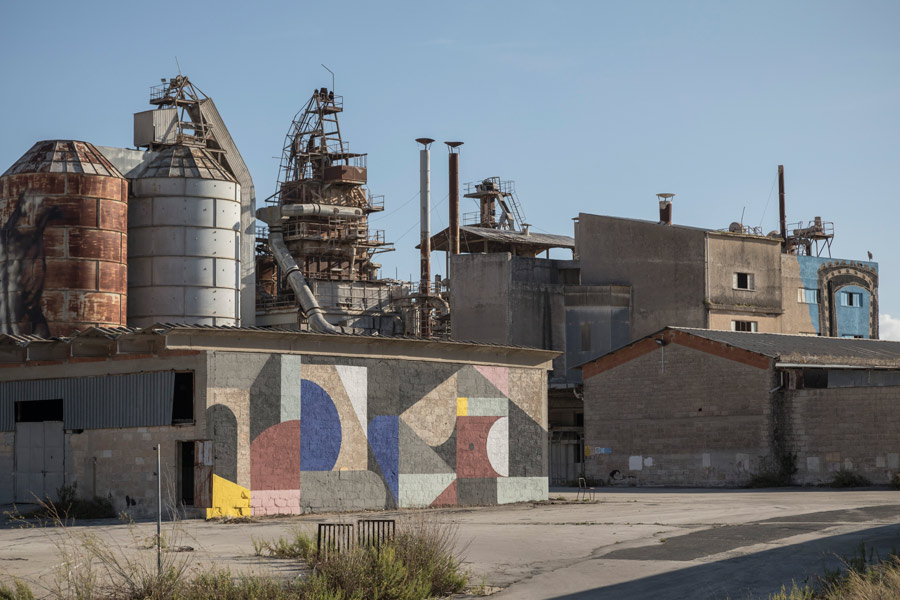
“It’s not simply a name that I’ve chosen to underline the charm of decadence,” Jager says, “it represents for me an ethical approach to art: the idea of dismantling, deconstructing, stripping is present in all my practice and it’s with this spirit that I related to the majestic industrial archaeological site.”
As you look at these hulking forms and heavy materials, it is perhaps difficult to imagine how such technologies with presence, power, and footprint can be considered obsolete, no longer germane to modern industrial processes. Here we see construction waste, broken glass, bricks, iron pallets – all part of the residue of the past that we’ve built upon. Once considers as well that the processes of the past have an impact on our present: environmental, economic and political.
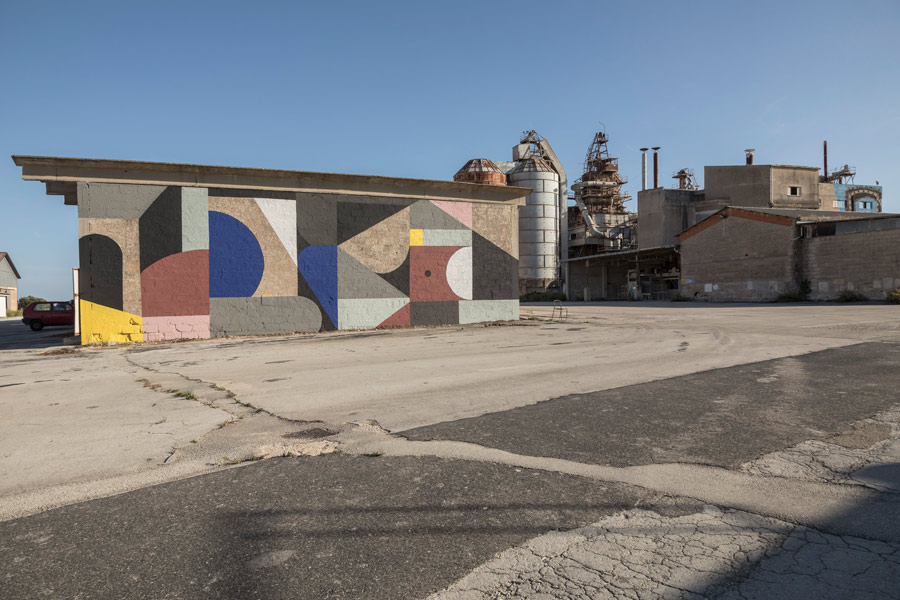
“In my artistic research there are traces of anthropization,” says the artist. “Urban landscapes, large architectural structures, bridges, quarries, – all represent alterations of the natural balance that have led man to face enormous catastrophes.”

www.bitumeplatform.it | www.festiwall.it
Other Articles You May Like from BSA:
Fresh from his residency at a nun’s convent called Creença (Belief), Alberto Montes takes on the "Politics of Lucidity" in this new mural in Barcelona here on October 1st one year after Catalan voted ...
Our weekly focus on the moving image and art in the streets. And other oddities. Now screening : 1. Escif: Greenpeace, For a Sustainable City.2. Street Art in 20203. Mathieu Libman: The Moon'...
What are you celebrating this season? We’re celebrating BSA readers and fans with a holiday assorted chocolate box of 15 of the smartest and tastiest people we know. Each day until the new yea...
Put My Thang Down Flip It and Reverse It Pete Kirill process shot of his work on Marilyn Monroe / Missy Elliot tribute. (photo © Matt Fox-Tucker) Miami and the just-ended Art Basel 2013 is a holy m...
Free spirit Lady Pink has sprinkled a summer bouquet across a wall here with friends in Queens for the Welling Court Mural Project this year. The Ecuadorian-American artist is known by many for her g...
 BROOKLYN STREET ART LOVES YOU MORE EVERY DAY
BROOKLYN STREET ART LOVES YOU MORE EVERY DAY